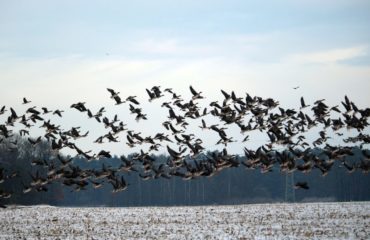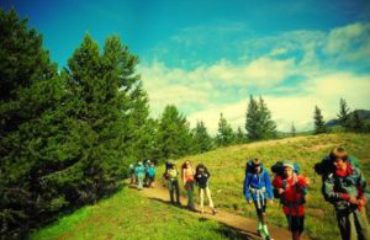By MK Gunn
As I laced up my hiking shoes at my sister’s house in the East Bay area of California, my five-year old niece came running up to me. “MK!” she exclaimed, her dark eyes sparkling and curly hair bouncing. “If you see any animal tracks, will you take a picture for me?!”
I was elated by her interest in nature and told her that I certainly would! Yet I doubted there would be any animal tracks. Then I set off for the trails of Joaquin Miller Park. It was Sunday and, as expected, any critter tracks from the night before had already been covered by tracks from hikers, runners, and mountain bikers. The wild animals around here certainly knew to steer clear of the barrage of weekend recreationists. I barely even heard a few birds on my two hour jaunt.
The interaction with my niece got me thinking about just how different the lives of wild animals are in Colorado compared to areas heavily populated by humans. Since wild animals aren’t often seen, it can be easy to forget about their roles in nature and that their ancestors were here long before most of ours.
Spying wild animal tracks is a daily occurrence in Durango. Many wild animals make their homes on the edge of town and then wander past my house a mere mile from downtown. These include deer, raccoons, skunks, bears, coyotes, gray foxes, kit foxes, squirrels, and the occasional mountain lion. Many birds live right in town such as crows, finches, sparrows, juncos, magpies, and owls.
We are very fortunate in Southwest Colorado to have the state’s largest Wilderness area. (See my column from November 2019 for more about designated Wilderness). The Weminuche Wilderness contains 499,771 acres of roadless area. Joaquin Miller Park and adjacent Redwood Regional Park might seem big when I am on the trails, but their combined area is only 2,330 acres and there are occasional roads running through. Overall, East Bay parks cover a patchwork totaling just 120,000 acres that serves 2.5 million residents! The population in the counties surrounding the Weminuche Wilderness adds up to just 72,490 people – a mere 3% of the East Bay population.
Wild animals do live in areas heavily populated by humans but these animals spend much of their lives sneaking around to avoid humans. Redwood Regional Park is home to surreptitious deer, coyotes, raccoons, rabbits, squirrels and even the rare golden eagle and Alameda striped racer (a type of snake). As humans have encroached further and further on their natural habitats, they have had to adapt in order to survive. Undoubtedly there are far fewer wild animals in these places than there were 100 years ago. Not only have populations dwindled, but diversity of species has also greatly declined.
But there are many places in Colorado where humans are so rare that wild animals don’t even know to be afraid of us. A few years ago, I was on a newly cut section of the Continental Divide Trail. The trail was so new that the pikas were barely cautious when they saw me. As I stood there, they would run up within inches to get a better look at me and then run away. But they didn’t hide. They were so curious and cute! I’ve had similar experiences with pikas in remote corners of the Wind River mountain range in Wyoming. Once, a pika even licked my salty leg while I was taking a rest on a mountainside. Then it tried to nibble on me! There are wild animals living in Colorado that have never even seen a human. They live their entire lives deep in the wilderness.
So, the next time you see a wild animal – even if it’s a common mouse, deer, or magpie – remember how fortunate we are to have such a diversity of wildlife here in Southwest Colorado. But we are all responsible to make sure that wild animals are here for future generations. Please, help us all by doing your part:
- Properly store your trash and toxic chemicals – these can kill wildlife.
- Don’t feed wild animals – they will become habituated to humans and may become subject to starvation or poaching.
- Keep dogs on leash or within sight and under voice control. Don’t let them chase animals.
- Don’t taunt or scare wildlife unless they are clearly threatening you.
- Educate those around you as to what is best for wild animals.
- Remember, the wild is their home. We humans are just visiting!
MK Gunn enjoys sneaking quietly around the nearly 3 million acres of public land in southwest Colorado hoping that only pikas try to nibble on her. Contact her at MK@sjma.org.





